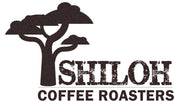Rwanda - Decaf
Location: Nyamasheke
Varietal: Red Bourbon
cherry is now pulped in preparation for fermentation. The
now parchment coffee is fermented in concrete fermentation tanks for an average of 12 hours under water. During this time, the fermenting parchment is agitated several times throughout the day.
After fermentation, coffee is released into a large serpentine grading channel. This process also separates parchment into different density grades. During the washing process, parchment is continuously agitated to encourage lower density parchment to float and to clean any residual mucilage off the parchment. Once the parchment is separated into grades, it is given a final post-wash rinse. At this point, coffee is taken to a pre-drying area where the parchment is hand-sorted removing any insect-damaged, discoloured or chipped coffee. The parchment is laid out to dry and turned on a regular basis throughout the day for between 15 and 20 days depending on the climate.
Once landed, the beans are transported to CR3 in Bremen,
Germany, which is a decaffeination plant which uses carbon dioxide to extract caffeine. Decaffeination in this way avoids the use of harsh chemicals to strip caffeine from the beans, which can also risk pulling key flavour compounds from the coffee. With CO2 decaffeination, the beans are soaked in heated water, to the point where the porosity of the beans structure is massively increased.
These porous beans are transferred to a tank where highly
pressurised liquid CO2 is added, at 1,000 lb f/in², and heated to 200˚F or 93˚C. CO2 in this state is known as supercritical CO2. The extraction of caffeine requires a solvent, which CO2 becomes in this environment. The CO2 enters the porous bean structure, and binds to the caffeine present.
Once the desired level of caffeine reduction is achieved, the beans are returned gradually to their original state, dried, and repackaged.
£8.50
Please select all options.
We tried it for the first time today. Unfortunately it doesn't stand out in any way. I will allow some oxidisation to occur over the next five days and then carry out another tasting. Personally I think it will make a significant difference, hopefully for the better.
Brilliantly selected and roasted coffee beans. No soluch thing as an average coffee from this company. Also customer service is second to none. Excellent people with a passion for coffee and all that it takes from planting to brewing .
Great ethics and amazing enthusiasm, long may they continue.


